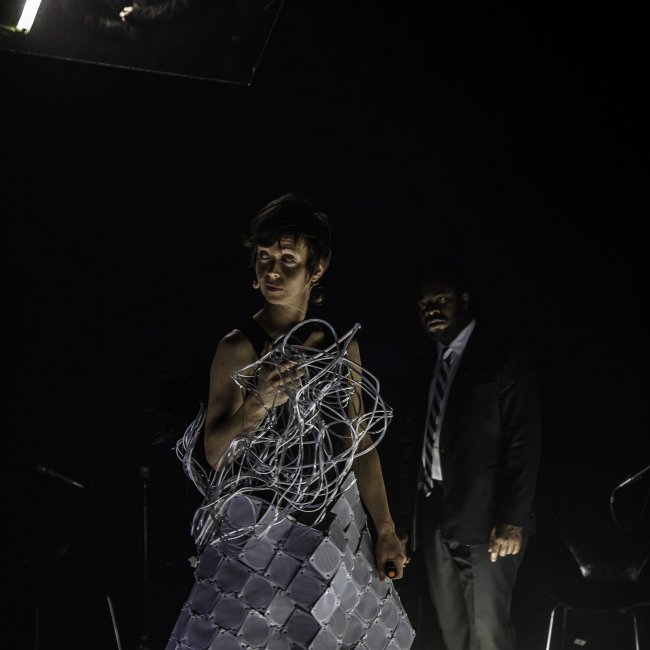

The first five years of the project are summarized in a four-disk, eighteen-work compilation that Meyer Sound Laboratories produced in 2020. She had launched “Density 2036” four years earlier, committing herself to a quarter-century journey that has little precedent. Within a decade, it had become one of America’s dominant new-music groups, and so it remains, although Chase stepped away from the ensemble in 2017 to focus on a solo career. Her first conduit was the International Contemporary Ensemble, which she founded in 2001. Beauty here was about peeling off the mask and letting the fire beneath each breath contact the metal in its own raw, unaffected way.” She tried to program the work at her junior-high-school graduation but was obliged to play “Danny Boy” instead.Įver since, Chase has followed an affably messianic urge to bring modern music to a wider audience. Chase has written of the score, “There was no need to make anything pretty, homogenous, uniform.

Short in duration, cosmic in scope, “Density 21.5” transforms the flute into a luminous vessel of abstraction.
LUCIFORM CLAIRE CHASE ICE SERIES
She became fixated on the flute in childhood, and at the age of thirteen she had a life-altering encounter with “Density 21.5,” Edgard Varèse’s 1936 soliloquy for flute, after which her series is named. Come, my friends, / ’ Tis not too late to seek a newer world.”Ĭhase, who is forty-three, grew up in a musical home in Leucadia, California, a seaside community north of San Diego.

“Sex Magic” ends with music of mysterious tenderness, with Tennyson cited in the score: “The long day wanes the slow moon climbs. . . . Lim’s creation, though, is less an enactment of violence than an exorcism of it. At one unnerving moment, Chase blows on an Aztec death whistle-a ceramic resonator that can evoke a roaring wind or a screaming crowd. Liza Lim’s “Sex Magic,” a sprawling ritual for contrabass flute, electronics, and kinetic percussion which Chase presented online in 2020, explores what the composer calls “the sacred erotic in women’s history,” gesturing toward the Pythia, at Delphi, and the Hindu rage goddess Kali. Chase’s events, likewise, often have the feeling of a séance, an esoteric happening. What must have caught the attention of prehistoric bone flutists was the sorcery of giving voice to a no longer animate object. She made heavy use of her contrabass flute, which she has nicknamed Big Bertha more than six feet tall, it emits tones of unearthly, breathy depth, suitable for an audience of whales. In the latest installment of the series, which had three performances at the Kitchen, in December, Chase was a solitary figure in an audiovisual storm, holding her own against roiling electronic textures and a barrage of video images. Since 2013, she has been commissioning scores for a monumental project called “ Density 2036” when it comes to completion, in the designated year, it will have added as many as a hundred pieces to the flute repertory. Claire Chase, perhaps the instrument’s most imaginative living advocate, is bent on tapping its primal power.

Over the millennia, the flute has come to be seen as delicate, decorous, ethereal. Pascal Quignard, in his haunting book “ The Hatred of Music,” summons a plausible scene: “The small packs of humans who hunted, painted, and modelled animal forms would hum short phrases, execute music with the help of birdcalls, resonators, and flutes made from marrowbones, and dance their secret stories while wearing masks of prey as savage as themselves.” Did it speak of love? Tribe? Nature? God? One unsettling bit of evidence is that the first known flutes were made from the remains of creatures that had been hunted and killed. There is no way of knowing what this music sounded like or what purpose it served. Prehistoric humans fashioned flutes, pipes, and whistles from the bones of birds and other animals. The flute is the oldest of instruments, its recoverable history going back some forty thousand years.


 0 kommentar(er)
0 kommentar(er)
